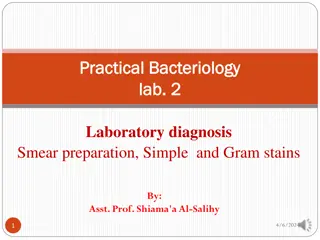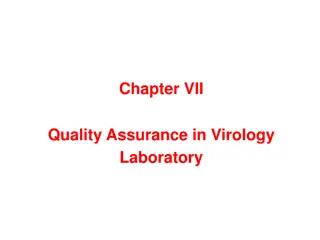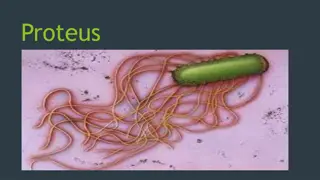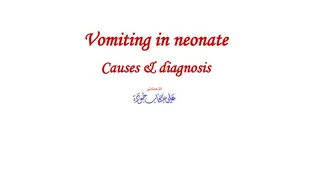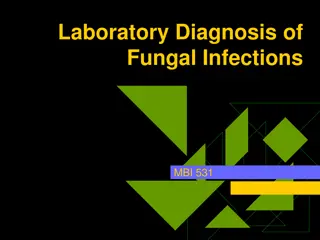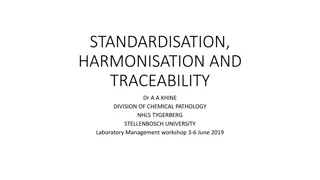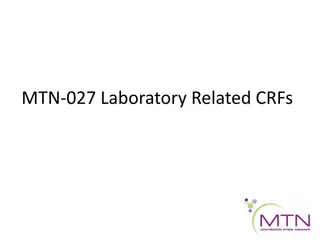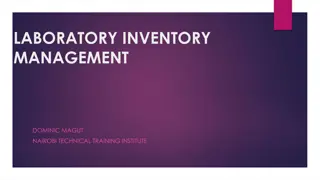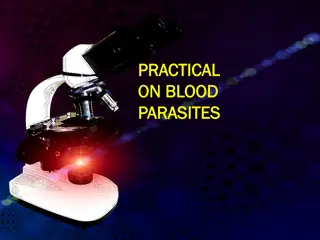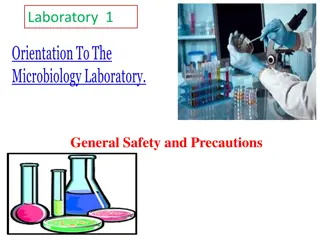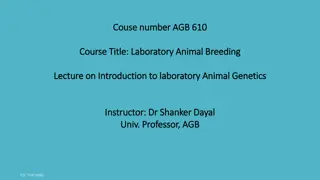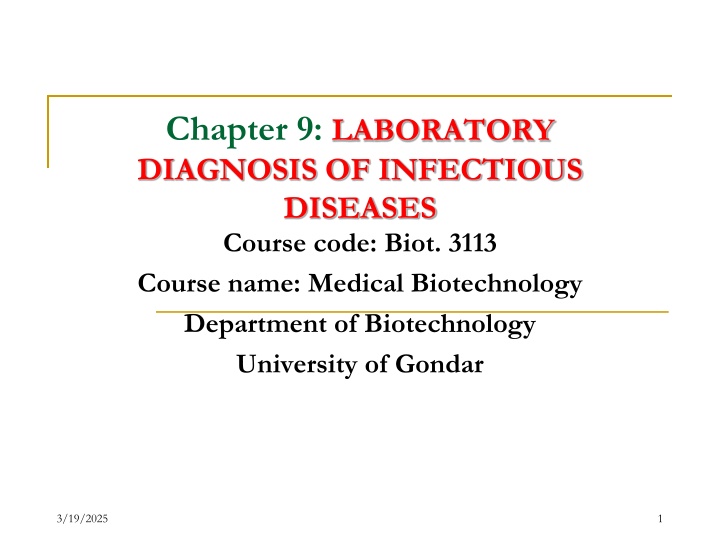
Laboratory Diagnosis of Infectious Diseases - Understanding Pathogens and Immunity
Dive into the world of infectious diseases with a focus on laboratory diagnosis, pathogen interactions, and immunity. Learn about the stages of infection, clinical features, and the significance of latent infections in this comprehensive course.
Download Presentation

Please find below an Image/Link to download the presentation.
The content on the website is provided AS IS for your information and personal use only. It may not be sold, licensed, or shared on other websites without obtaining consent from the author. If you encounter any issues during the download, it is possible that the publisher has removed the file from their server.
You are allowed to download the files provided on this website for personal or commercial use, subject to the condition that they are used lawfully. All files are the property of their respective owners.
The content on the website is provided AS IS for your information and personal use only. It may not be sold, licensed, or shared on other websites without obtaining consent from the author.
E N D
Presentation Transcript
Chapter 9: LABORATORY DIAGNOSIS OF INFECTIOUS DISEASES Course code: Biot. 3113 Course name: Medical Biotechnology Department of Biotechnology University of Gondar 3/19/2025 1
Infectious disease is: A group of common diseases Caused by different pathogens To possessing infectivity To form epidemic Infectious disease is a threat to the health of people The pathogens causing infectious diseases are: Virus, Chlamydia, rickettsia, mycoplasma, spirochete, bacteria, fungus, protozoa and helminthes 3/19/2025 2
Infection and Immunity Definition of infection Complex process of interaction between pathogen and human body Infection is composed of three factors: pathogen, host and environment There are commensalisms and opportunistic infection Manifestations of infectious process (Infection spectrum) Clearance of pathogen Covert infection (Subclinical infection) Overt infection (Clinical infection or apparent infection) Carrier state 3/19/2025 3
The five periods of disease (sometimes referred to as stages or phases) include: the incubation, prodromal, illness, decline, and convalescence periods. The incubation period occurs in an acute disease after the initial entry of the pathogen into the host (patient). 3/19/2025 4
Features of infectious disease Clinical features Regularity in the development of course Incubation period : diagnosis, quarantine period Prodromal period Period of apparent manifestation Convalescent period Relapse Recrudescence 3/19/2025 6
Chronic carrier: For longer period Latent infection A latent infection is an infection that is hidden, inactive, or dormant. As opposed to active infections, where a virus or bacterium is actively replicating and potentially causing symptoms, latent infections are essentially static. 3/19/2025 9
Infection and Immunity The action of pathogen in infectious process The pathogenicity of pathogen is related to: (is the ability to produce disease in a host organism). Invasiveness: disease or condition that has a tendency to spread. Virulent: extremely severe or harmful in its effects. Number of pathogen Mutation (variability) 3/19/2025 10
Infection and Immunity The action of immune reaction of host in infectious process Non specific immunity Barrier action (natural barrier) External barrier: skin , mucosa Secretion of skin and mucosa Accessory organ 3/19/2025 11
Internal barrier: placenta, blood-brain barrier Phagocytosis Humoral action: Complement, Lysozyme, Fibronection, Cytokines. The complement system is a part of the immune system that enhances (complements) the ability of antibodies and phagocytic cells to clear microbes and damaged cells from an organism, promotes inflammation, and attacks the pathogen's cell membrane. Specific immunity Humoral immunity Immunoglobulin: IgG, IgM, IgE, IgA, IgD Cell mediated immunity 3/19/2025 12
Epidemic process and epidemic factors of infectious disease the process of the rise and the spreading of the infectious diseases among the people. Source of infection (basic conditions) Patients (acute, chronic), Covert infection , Carrier , Infected animal 3/19/2025 13
Epidemic process and epidemic factors of infectious disease Route of transmission Contact transmission ( direct and indirect), Air-borne, Food water fly borne, Insects borne, Blood borne, Soil borne. Susceptibility of population Factors of influencing epidemic process nature factors, social factors 3/19/2025 14
Features of infectious disease Basic features Pathogen kinds of pathogen Infectivity Epidemiological features Quality : exotic, local, endemicity Quantity : sporadic occurrence, epidemic, pandemic, outbreak, endemicity, seasonal 3/19/2025 15
Features of infectious disease Post infection immunity Viral infection: life-long immunity Bacteria infection: shorter immunity Helminthes infection: no protective immunity Protozoa infection: shorter immunity 3/19/2025 16
Fever: Elevated core temperature, often, but not necessarily, part of the systemic acute phase response to pathogens or other perceived threats. Fever enhances hosts immunity, increasing WBC count, decreases iron for bacterial growth, stimulates cytokines. Its duration and degree depend on the severity of the threat and the body's ability to respond. Body Temperature Body temperature is the amount of heat produced - heat lost. Internal core temperature is a more reliable indicator than surface temperature, which can change according to the environment or physical activity. 'Core' areas include tympanic membrane, rectum, bladder, esophagus, or pulmonary artery, the most representative. Recall: C = 5/9 (F-32) F = 9/5 (C+32) 3/19/2025 17
Applications of Molecular Based Testing in Clinical Microbiology Rapid or high-throughput identification of microorganisms Detection and analysis of resistance genes Genotyping Classification Discovery of new microorganisms
Laboratory Investigation of Microbial infections Examining specimens to detect isolate and identify pathogens: 1- Microscopy 2- Culture techniques 3- Biochemical reactions 4- Serological identification: 5- Molecular biology techniques 6- Bacteriophage typing 3/19/2025 19
1- Microscopy Microorganisms can be examined microscopically for: a- Bacterial motility: Hanging drop method: A drop of bacterial suspension is placed between a cover slip and glass slid b- Morphology and staining reactions of bacteria: Simple stain: methylene blue stain 3/19/2025 20
1- Microscopy Gram stain: differentiation between Gm+ve and Gm ve bacteria . Primary stain (Crystal violet) . Mordant (Grams Iodine mixture) . Decolorization (ethyl alcohol) . Secondary stain ( Saffranin) Ziehl-Neelsen stain: staining acid fast bacilli . Apply strong carbol fuchsin with heat . Decolorization (H2SO4 20% and ethyl alcohol . Counter stain (methylen blue) 3/19/2025 21
2- Culture Techniques * Culture media are used for: - Isolation and identification of pathogenic organisms - Antimicrobial sensitivity tests * Types of culture media: a- Liquid media: - Nutrient broth: meat extract and peptone - Peptone water for preparation sugar media - Growth of bacteria detected by turbidity b- Solid media: - Colonial appearance - Hemolytic activity - Pigment production 3/19/2025 22
Types of solid media 1- Simple media: Nutrient agar 2- Enriched media: media of high nutritive value Blood agar Chocolate agar Loffler s serum 3/19/2025 23
Types of solid media 3- Selective media: allow needed bacteria to grow . Lowenstein Jensen medium . MacConkeys agar . Mannitol Salt Agar 4- Indicator media: to different. between lact. and non lact. ferment . MacConkeys medium . Eosine Methlyne blue Agar 5- Anaerobic media: for anaerobic cultivation . Deep agar, Robertson s Cooked Meat Medium 3/19/2025 24
Colonial appearance on culture media * Colony morphology: . Shape . Size . Edge of colony . Color * Growth pattern in broth: . Uniform turbidity . Sediment or surface pellicle * Pigment production: . Endopigment production (Staph. aureus) . Exopigment production (Ps. aeruginosa) 3/19/2025 25
Serological identification A- Direct serological tests: - Identification of unknown organism - Detection of microbial antigens by using specific known antibodies - Serogrouping and serotyping of isolated organism B- Indirect serological tests: - Detection of specific and non specific antibodies (IgM & IgG) by using antigens or organisms 3/19/2025 26
DIAGNOSTIC TECHNOLOGIES Immunoserology Hemagglutination EIA Latex agglutination Complement fixation Immunoflorecent 3/19/2025 27
RAPID DIAGNOSTIC TESTS High sensitivity and specificity High negative and positive predictive values High accuracy compared to gold standard Simple to perform Rapid turn around time Cost effective 3/19/2025 28
LIMITATIONS OF CONVENTIONAL CLINICAL MICROBIOLOGY Culture Labor intensive Need for special media Prolonged period of time to culture Some organisms are uncultivable on artificial media Potential health hazards Antigen Detection Negative tests require confirmation Effected by poor specimen collection Low microbe burden Serology Unhelpful during early stage of infection Not quite useful in immunocompromised patients 3/19/2025 29
Molecular Biology Techniques A- Genetic probes (DNA or RNA probes): Detection of a segment of DNA sequence (gene) in unknown organism using a labeled probe Probe: consists of specific short sequence of labeled single- stranded DNA or RNA that form strong covalently bonded hybrid with specific complementary strand of nucleic acid of organism in question 3/19/2025 30
Molecular Biology Techniques B- Polymerase chain reaction (PCR): Amplification of a short sequence of target DNA or RNA. Then it is detected by a labeled probe C- Plasmid profile analysis: Isolation of plasmids from bacteria and determination of their size and number compared with standard strains by agarose gel electrophoresis 3/19/2025 31
MOLECULAR DIAGNOSTICS Most widely used is PCR High sensitivity High specificity Diversity Nucleic acid probes Do not amplify DNA 3/19/2025 32
Specific PCR: uses primers to known DNA targets. Use when conventional diagnostics are inadequate, time consuming, difficult and hazardous. Broad range PCR: uses complementary primers to conserved regions shared by a given taxonomic group. Used in cases of B. henselae and Mycobacterium spp. Multiplex PCR Uses single clinical specimen to investigate several potential pathogens simultaneously Encephalitis/meningitis panel: HSV,VZV, CMV HHV-6, EBV, Enteroviruses Real-time PCR Utilizes a fluorescent labeled probe Requires small volumes thus takes 30-60 minutes to complete 3/19/2025 33
PCR Detection of Microorganisms: Quality Control PCR and other amplification methods are extremely sensitive and very specific. For accurate test interpretation, use of proper controls. Positive control: positive template Negative control: negative template Amplification control: omnipresent template unrelated to target Reagent blank: no template present
Positive control: receives a treatment with a known response, so that this positive response can be compared to the unknown response of the treatment. Negative control: is a group in which no response is expected. It is the opposite of the positive control, in which a known response is expected. Amplification control: omnipresent template unrelated to target. DNA sequence present in the same tube as the sample, which is coamplified simultaneously with the target. Reagent blank: no template present
Internal controls are used as indicator of perfect nucleic acid extraction, quality of samples, quality of PCR. Internal controls can be either: homologous extrinsic, heterologous extrinsic, or heterologous intrinsic. A homologous extrinsic control is a wild-type- derived control with a non target-derived sequence insert.
A heterologous extrinsic control is a non-target- derived control added to each sample prior to nucleic acid extraction. It requires a duplex amplification of target DNA or RNA and control DNA or RNA in a single reaction. A heterologous intrinsic control confirms the presence of human nucleic acid and thus cellular material in the sample.
PCR Quality Control: Internal Controls Homologous extrinsic Controls for amplification Target sequence Heterologous extrinsic Controls for extraction and amplification Heterologous intrinsic Human gene control
Quality Control: False Positives Contamination: check reagent blank Dead or dying organisms: retest 3 6 weeks after antimicrobial therapy Detection of less than clinically significant levels
Real time PCR for Diagnosis of Infectious Disease Detect PCR product during synthesis Requires fluorescence-based detection and specialized detection instrumentation Advantages Less time for results Improved analytical sensitivity Broad applicability (target characterization, load determination etc) 3/19/2025 40
OTHER USES OF MOLECULAR DIAGNOSTICS Viral load monitoring Viral genotyping Bacterial resistance detection Bacterial genotyping 3/19/2025 41
LIMITATION OF PCR TECHNOLOGIES Specimen should be frozen until amplification No antimicrobial sensitivity is available Needs the clinician to name the suspect Cost False positives caused by amplification of contaminants Only sample from normally sterile sites should be considered for broad- range PCR Specimen is required to be refrigerated or stored in alcohol before processing 3/19/2025 42

